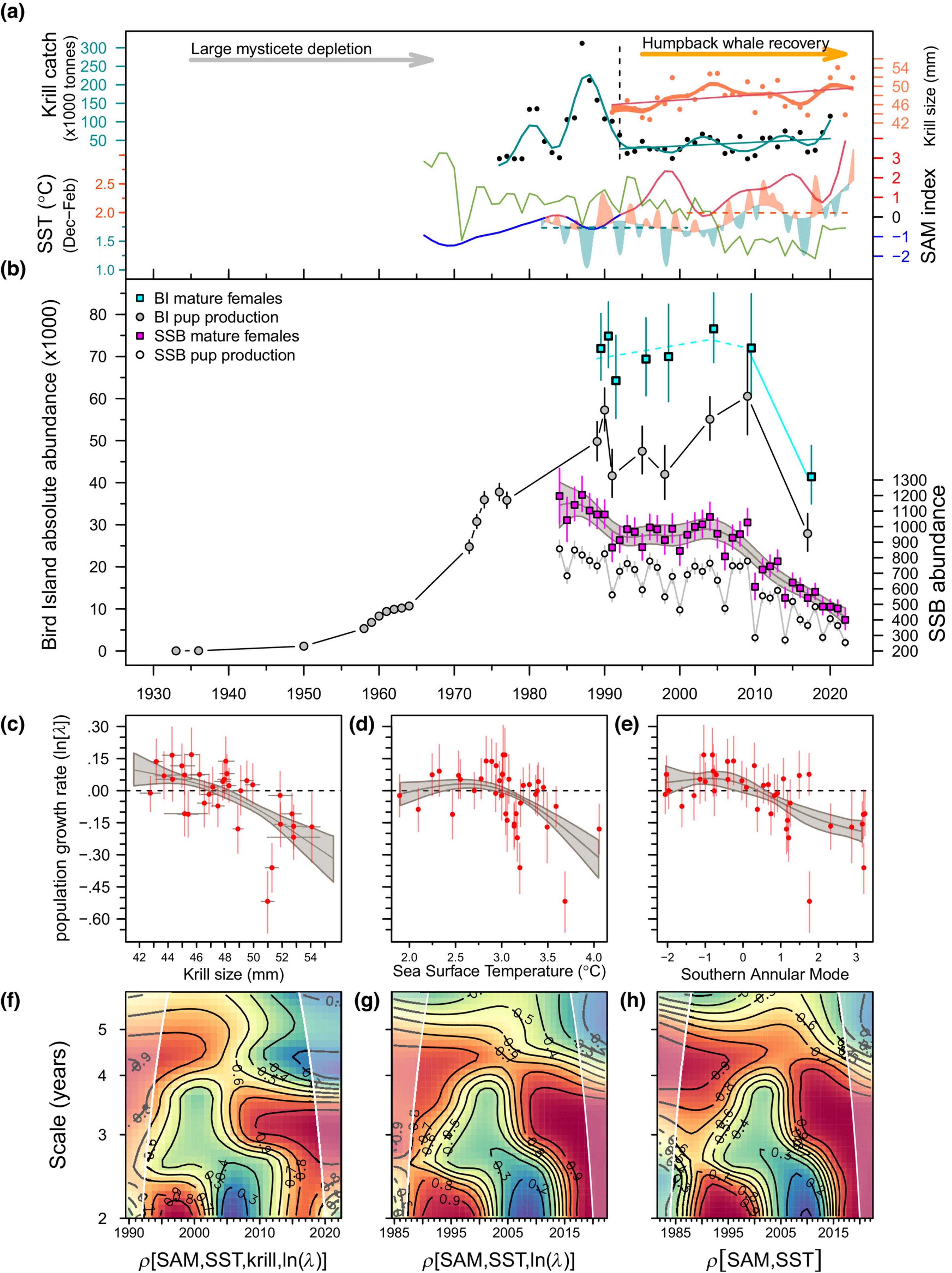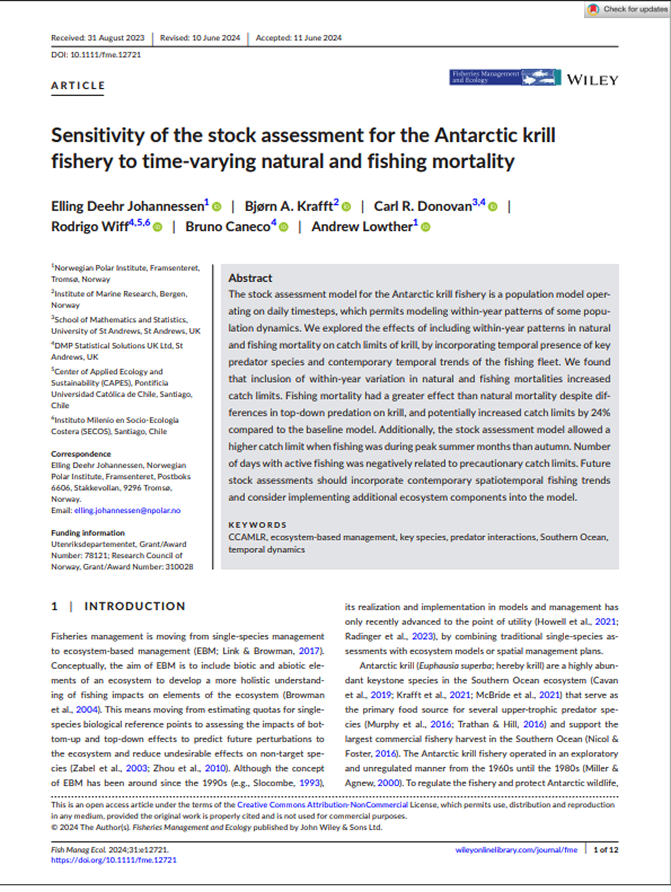Antarctic ecosystem
Fisheries management
Biomass
Climate
Krill (Euphausia superba)
Ninety years of change, from commercial extinction to recovery, range expansion and decline for Antarctic fur seals at South Georgia
Summary
This comprehensive study documents 90 years of Antarctic fur seal population changes at South Georgia. The seals recovered from near extinction in 1907 to peak abundance around 2007-2009. The population reached 3.5 million individuals, representing approximately 98% of the global population. Researchers used advanced population models with long-term breeding and survival data. Their analysis revealed that after 75 years of sustained recovery and growth, the Bird Island population collapsed in 2009. The population has since declined by 7.2% annually. This decline correlates directly with climate-driven changes. These changes reduced the availability of krill, the seals' primary food source. The study demonstrates how environmental shifts can rapidly reverse successful wildlife conservation achievements.

1
The figure shows how environmental changes affected seal populations at South Georgia from 1930-2020. Panel (a) tracks key environmental factors: climate patterns, rising sea surface temperatures, krill availability, and commercial fishing. Panel (b) shows the complete population story - near extinction, recovery to peak abundance, and sharp decline after 2009. Panels (c-h) demonstrate the statistical relationships between environmental changes and population growth.Key Findings
1
Antarctic fur seals at South Georgia make up approximately 98% of the world's population, reaching 3.5 million individuals in 2007-2009. 2
The population recovered over 90 years from commercial hunting extinction in 1907 to become the world's most abundant seal species in this family. 3
A sharp population crash began at Bird Island in 2009, with numbers declining by 7.2% each year since then. 4
This decline matches climate-driven changes in ocean surface temperatures and reduced krill availability. 5
Current population levels at the study site have dropped back to numbers last seen in the 1970s. 6
Climate change and potential food competition from recovering whale populations may prevent future population recovery.

